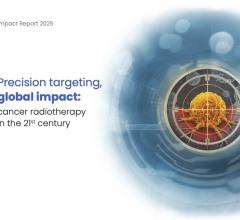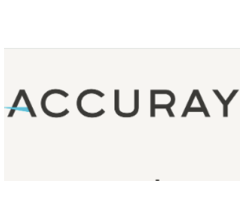
October 21, 2015 — Stage III non-small cell lung cancer (NSCLC) patients receiving intensity-modulated radiation therapy (IMRT) have 44 percent fewer cases of severe pneumonitis and improved likelihood of completing consolidative chemotherapy after radiation, compared to patients who receive three-dimensional conformal radiation therapy (3-D CRT). These findings were derived from research presented at the American Society for Radiation Oncology’s (ASTRO’s) 57th annual meeting.
The standard of care for patients with locally-advanced (stage III) lung cancer is concurrent chemotherapy with radiation therapy (RT). Two different types of RT are typically used to treat these patients: 3-D CRT and IMRT. Although IMRT is a more advanced and more expensive form of RT, it can target treatment to lung tumors while minimizing radiation exposure of sensitive organs like the lungs and heart from high radiation doses.
This study is a secondary analysis of the data compiled from NRG/RTOG 0617 to compare the use of IMRT and 3-D CRT in patients with lung cancer. NRG/RTOG 0617 was a large, multi-institutional phase III, randomized clinical trial of patients with locally-advanced NSCLC conducted from 2007 to 2011. The original study compared a high-dose of 74 Gy to a standard dose of 60 Gy. All patients received concurrent chemotherapy consisting of carboplatin/paclitaxel and were randomized to be treated with or without cetuximab.
Of the 482 patients treated with RT, 47 percent were treated with IMRT and 53 percent were treated with 3-D CRT. Because the original trial design was not randomized for radiation technique, the IMRT group had larger and more advanced-stage tumors. Data indicated that 38.6 percent of the IMRT group had stage IIIB tumors, compared to 30.3 percent of the 3-D CRT group.
The study results showed that although the IMRT patients had more advanced tumors, they had a lower occurrence of severe pneumonitis (for this study, this was defined as lung inflammation that required oxygen, steroids or mechanical ventilation; and/or led to death) than patients who had been treated with 3-D CRT. Data indicated that 3.5 percent of IMRT patients had severe pneumonitis compared to 7.9 percent of the 3-D CRT patients (P = 0.046). IMRT remained associated with less severe pneumonitis in multivariate analysis (HR 0.44, P=0.0653), and was particularly pronounced in large tumors that were bigger than the median size of 460 mL (HR 0.22, P = 0.02). IMRT was also associated with significantly lower doses of radiation delivered to the heart, which were highly associated with patient survival. Additionally, patients treated with IMRT were more likely to complete high-dose consolidative chemotherapy than patients treated with 3-D CRT (37 percent versus 29 percent, P = 0.051).
“We looked at one of the largest clinical trials ever done for locally-advanced NSCLC and found that the most important factors associated with severe pneumonitis were IMRT technique and the lung V20. The low-dose bath such as the lung V5 was not associated with any toxicity outcome. These findings have the potential to fundamentally change the way we deliver radiation therapy for locally-advanced lung cancer,” said Stephen Chun, M.D., lead author of the study and Fellow in the Department of Radiation Oncology at The University of Texas MD Anderson Cancer Center in Houston. “By reducing severe life threatening pneumonitis, IMRT has the potential to improve patients’ quality of life, reduce hospital/intensive care unit admissions, and decrease supplemental oxygen use. In our study, it seemed that IMRT might also facilitate patients being able to tolerate higher doses of consolidative chemotherapy which are standard after radiation.”
For more information: www.astro.org


 December 11, 2025
December 11, 2025 









